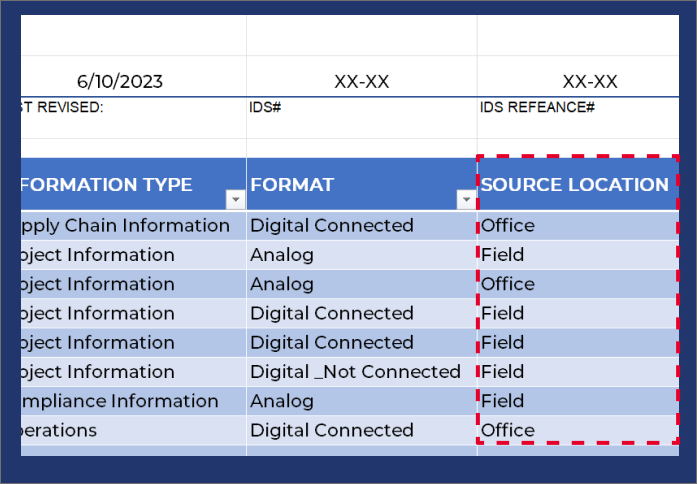File Type / Extension
General
This field has a drop down for the parameters listed below. These represent commonly used parameter labels for data discovery but can be added to on the List Reference tab of the IDS.
File Type / Extension
 In this field, we are capturing file extensions, an often overlooked but crucial aspect of data management. File extensions are the short suffixes that follow the period at the end of a file name. They are typically composed of three or four characters and serve to define the file's type, or the software that's associated with it.
In this field, we are capturing file extensions, an often overlooked but crucial aspect of data management. File extensions are the short suffixes that follow the period at the end of a file name. They are typically composed of three or four characters and serve to define the file's type, or the software that's associated with it.
For instance, a file named "report.docx" has a DOCX extension, indicating that it's a Microsoft Word document. Similarly, an image file might end in .JPG or .PNG, and a spreadsheet file might end in .XLSX. By identifying and understanding the various file extensions used within our organization, we can better manage the software requirements, compatibility issues, and data security protocols. This understanding can also aid in planning and creating effective storage, retrieval, and archiving strategies, which will be explored in the following sections.
To investigate what file extensions are associated with different software products on your PC do the following. (Windows PC)
Best Practices
- Click the Start button, and then click on "Control Panel."
- In the Control Panel, click on "Programs."
- Under "Default Programs," click on "Make a file type always open in a specific program."
- A list of file extensions and their associated programs will appear.
Additional Quality Descriptions
- Open a File Explorer window (you can do this by pressing the Windows key + E on your keyboard).
- Click on the "View" tab on the ribbon at the top of the window.
- In the "Show/hide" section of the "View" tab, check the box that says "File name extensions."
Additional Information
File extensions are often hidden in Windows and other platforms so this particular field we'll require you to unhide and investigate various files within the different storage locations of your organization. To unhide the file extensions on your local PC do the following. (Windows PC)
Understanding Good Stewardship
 Consistency is difficult and oftentimes you are not coming into a clean slate. Setting up your naming conventions in a very systematic way will allow you to use tools such as "ReNamer". This an inexpensive tool that will rename existing files using rule sets. It's easy to use and can even help you establish good naming conventions by encouraging consistent rule use.
Consistency is difficult and oftentimes you are not coming into a clean slate. Setting up your naming conventions in a very systematic way will allow you to use tools such as "ReNamer". This an inexpensive tool that will rename existing files using rule sets. It's easy to use and can even help you establish good naming conventions by encouraging consistent rule use.

